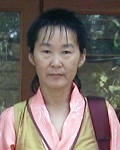The Robert H. N. Ho Family Foundation Grants for Critical Editions and Scholarly Translations

Chris Clark
Year:
- 2021
University of Sydney, Australia
A Critical Edition and Annotated Translation of the Apadāna, Vol. 2

Irina Regbievna Garri
Year:
- 2021
Institute for Mongolian, Buddhist and Tibetan Studies
A critical edition and a Russian translation of Sum pa Mkhan po Ye shes dpal 'byor's Mtsho sngon gyi lo rgyus (History of Kokonor)

Eric M Greene
Year:
- 2021
Yale University
Translation, Exegesis, and Cross-Cultural Understanding in Third-Century China: A Study and Translation of the Commentary to the Scripture on the Skandhas, Dhatus, and Ayatanas

Hortsang Jigme
Year:
- 2021
A critical edition and a Russian translation of Sum pa Mkhan po Ye shes dpal 'byor's Mtsho sngon gyi lo rgyus (History of Kokonor)

Susan A Landesman
Year:
- 2021
The First Female Buddha: Tara and the Tara-mula-kalpa’s Subsequent Revelation

Ryan Richard Overbey
Year:
- 2021
Skidmore College
A study and translation of the Consecration Scripture

Yumzhana Zhabon
Year:
- 2021
Institute for Mongolian, Buddhist and Tibetan Studies
A critical edition and a Russian translation of Sum pa Mkhan po Ye shes dpal 'byor's Mtsho sngon gyi lo rgyus (History of Kokonor)

